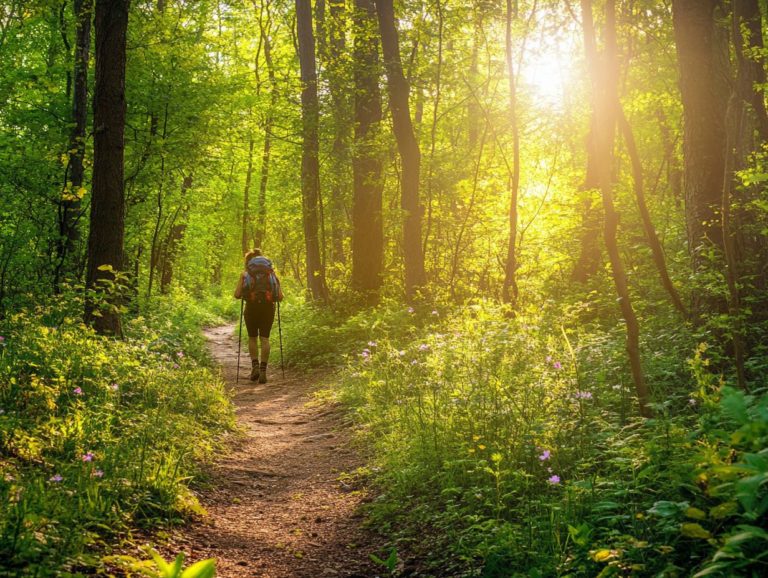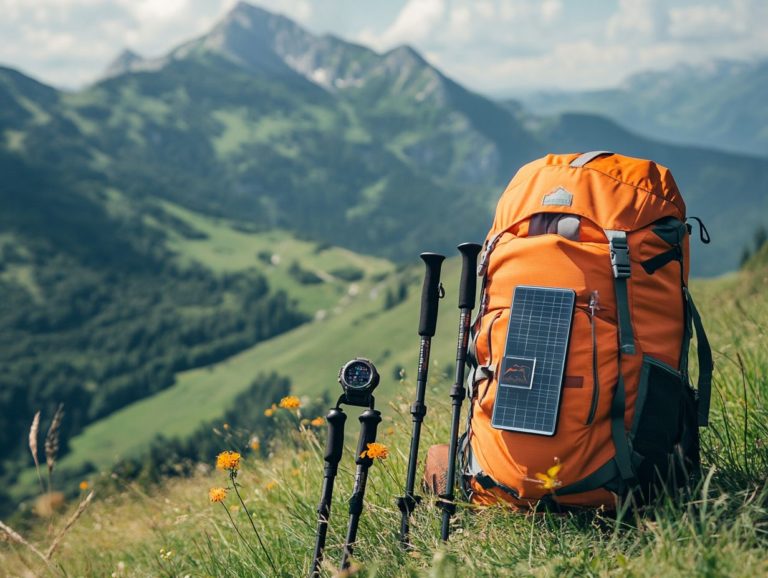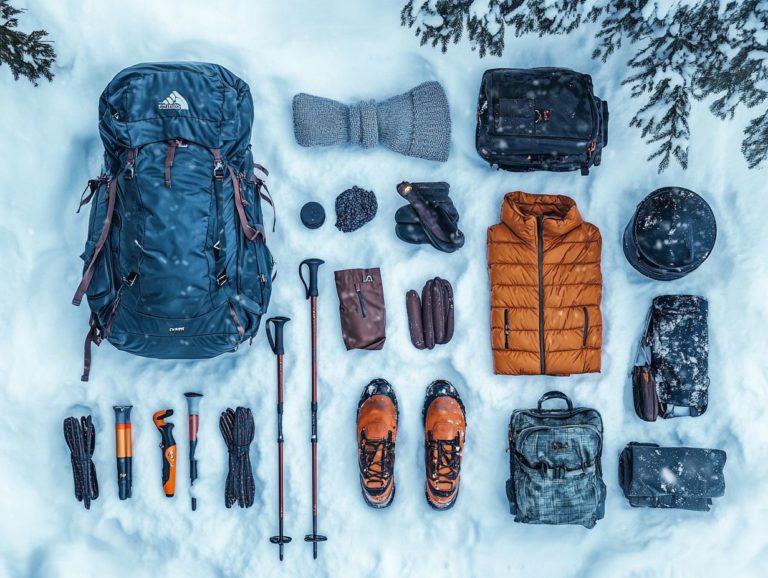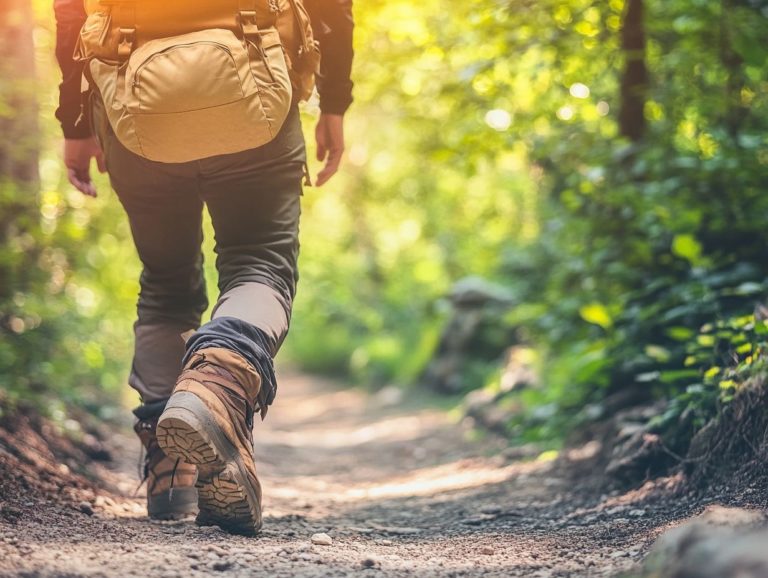How to Spot a Good Hiking Trail
Ready to hit the trails? Let s dive into how to choose the best hiking routes for your next adventure! Hiking provides a rejuvenating escape into the embrace of nature, but selecting the right hiking trail is crucial for a truly rewarding experience.
With an array of hiking options available, understanding their distinct characteristics will help you find the perfect match.
You ll need to consider several factors, from length and trail difficulty to the scenery and safety of the trail.
This guide is designed to assist you in researching and planning your hike, illuminating the features of a well-maintained trail.
Whether you re a seasoned hiker or just starting out, continue reading to uncover the secrets to selecting an enjoyable and safe hiking adventure, filled with great hiking tips.
Contents
- Key Takeaways:
- Understanding Hiking Trails
- Factors to Consider When Choosing a Hiking Trail
- Researching and Planning for a Hiking Trail
- Signs of a Good Hiking Trail
- Frequently Asked Questions
- What should I look for in a good hiking trail?
- Are there any specific details to keep an eye out for when evaluating a hiking trail?
- What are some red flags indicating a trail may not be suitable for all skill levels?
- How important is the surrounding environment when determining trail quality?
- What resources can assist in finding good hiking trails?
- What are some tips for beginners on how to spot a good hiking trail?
Key Takeaways:
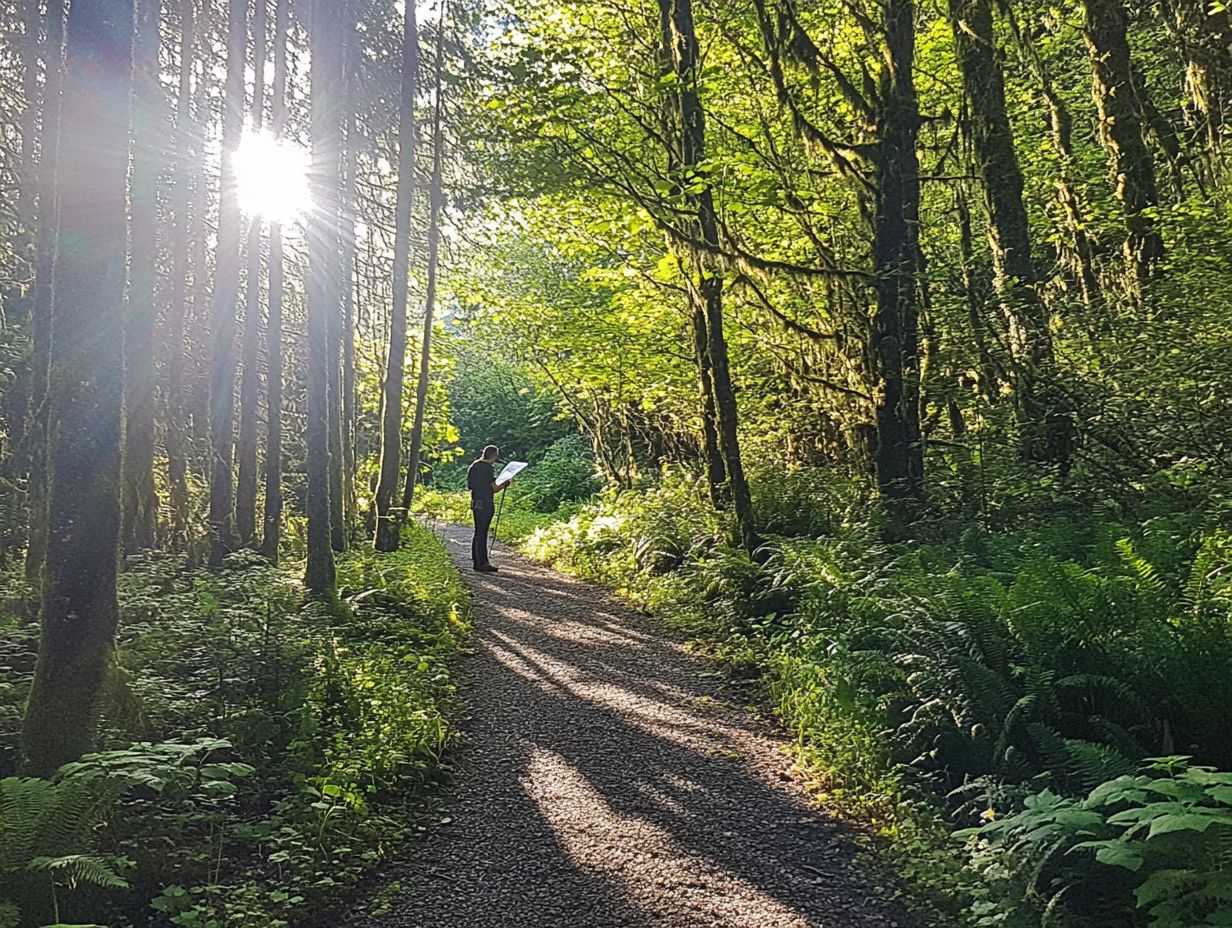
- A good hiking trail should be well-maintained and marked, making it easy to navigate and reducing the risk of getting lost.
- Look for varied scenery and terrain types on a hiking trail to keep the experience interesting and challenging.
- Consider the length, difficulty level, roundtrip distance, scenery, accessibility, and safety measures when choosing a hiking trail.
Understanding Hiking Trails
Knowing about hiking trails is essential for anyone who wants to enjoy nature. It helps you explore the outdoors with confidence. You’ll encounter a variety of trails, from easy, family-friendly paths to challenging mountain hikes, each presenting unique natural features that enrich your experience.
Whether you find yourself navigating the breathtaking waterfalls of Yosemite National Park or soaking in the stunning vistas of Breckenridge, being aware of the different types of trails available will elevate your outdoor adventures.
Types of Hiking Trails
There are countless types of hiking trails designed to cater to your unique preferences and skill levels, from short, family-friendly hikes to long, challenging mountain treks ideal for seasoned adventurers.
Each type of trail offers distinct experiences whether you’re seeking scenic routes that reveal breathtaking vistas or paths that meander through lush forests, perfect for wildlife watching. You might find yourself captivated by the sound of rushing water as you make your way toward stunning waterfalls, which serve as idyllic rest stops to soak in the beauty around you.
Select well-maintained trails that align with your group s dynamics and individual goals, ensuring safety and satisfaction for everyone involved whether you’re a leisurely walker or someone craving the adrenaline rush of rugged terrains.
Factors to Consider When Choosing a Hiking Trail
When picking a trail, you should meticulously consider several factors to ensure a safe and enjoyable outdoor experience. Pay attention to trail difficulty, roundtrip distance, and current trail conditions.
Each of these elements plays a crucial role in shaping your adventure and ensuring it meets your expectations.
Length and Difficulty Level
When you assess hiking trails, the length and difficulty level are crucial metrics that can significantly shape your hiking experience, especially when determining which trails are suitable for your companions.
These factors play a vital role in your overall trip planning, ensuring that everyone can enjoy a peaceful experience tailored to their abilities. For instance, if you choose a longer trail, you ll need to prepare more diligently in terms of time and energy. Steeper paths, on the other hand, call for careful consideration of your fitness level and stamina.
It’s wise to factor in the amount you climb and adjust your pacing accordingly to stave off fatigue or injuries. Selecting the right hiking gear such as durable footwear, appropriate clothing, and sufficient hydration can make a world of difference in enhancing both safety and enjoyment during your journey.
Scenery and Terrain

The scenery and terrain of a hiking trail can significantly elevate your experience, providing you with breathtaking views and opportunities to observe wildlife amid a tapestry of diverse natural features.
From majestic mountains that seem to touch the heavens to tranquil forests filled with the calming sounds of rustling leaves, each trail has its own distinct allure.
Adventurers like you often find immense joy in trails that meander alongside glistening bodies of water; the sight of shimmering lakes or cascading rivers adds a refreshing touch to your journey.
Exploring these varied environments allows you not just to hike, but to fully immerse yourself in the beauty of nature. Selecting trails with captivating landscapes and rich ecosystems guarantees an unforgettable outdoor adventure that nourishes the soul and kindles a fervor for exploration.
Accessibility and Safety
When you choose a hiking trail, accessibility and safety should be at the top of your list. This includes everything from proper trail markings to knowing how to find your way and the hiking gear you select.
These considerations are crucial in ensuring that people of all experience levels can immerse themselves in nature while minimizing risks during outdoor activities. A well-marked trail serves as a guide and boosts your confidence in navigating potential obstacles during your hiking journey.
By assessing a trail s accessibility based on your skill level, you can prevent accidents and ensure that everyone enjoys the outing.
It’s equally important to keep hiking safety measures in mind, such as:
- Carry a first aid kit
- Stay hydrated
- Inform someone of your route and expected return time
Being prepared for unexpected challenges, like sudden weather shifts or physical fatigue, can significantly enhance your outdoor experience. This way, you can fully appreciate the beauty of the wilderness while ensuring your safety.
Researching and Planning for a Hiking Trail
Get ready for an unforgettable hike! Proper preparation is your key to success. Effective research and planning are essential for your hiking adventure, enabling you to tap into a wealth of hiking resources, detailed reviews, and specialized hiking apps for tailored trail recommendations and insightful advice.
Online Resources and Reviews
Utilizing online resources and diving into detailed reviews is essential for you as a hiker aiming to elevate your trail experiences. Platforms like AllTrails and Falcon Guides offer invaluable insights and information tailored to your outdoor adventures.
These tools enable you to assess trail conditions, gauge difficulty levels, and uncover hidden gems that traditional guidebooks might overlook. By tapping into user-generated content, you gain access to real-time feedback from fellow adventurers eager to share their journeys and updates about various hiking trails.
This knowledge helps you make informed decisions that align perfectly with your skill level and preferences.
Websites like Advnture.com provide curated listings, expert tips, and a vibrant community, ensuring that your exploration of hiking options is not only easier but also more enjoyable and personalized to your unique needs.
Preparing for the Hike
Preparing adequately for a hike is essential for ensuring a safe and enjoyable outdoor adventure. The right hiking gear, hiking tips, and navigation skills play a crucial role in enhancing your experience.
Choosing the appropriate hiking attire and footwear is key; it not only boosts your comfort but also helps prevent injuries on the trail.
Grasping basic navigation skills, like reading maps and using a compass or GPS, can make a significant difference in keeping you on the right course.
Always prioritize safety by informing someone about your hiking plans and checking the weather conditions beforehand. If you’re considering longer excursions, familiarizing yourself with potential camping sites along your route can provide a fantastic opportunity to extend your adventure without feeling rushed.
Signs of a Good Hiking Trail

Recognizing the signs of a quality hiking trail is crucial for enhancing your outdoor experience. Look for well-maintained paths, diverse scenery, and appropriate safety measures. These key elements contribute to an enjoyable adventure in nature.
Well-Maintained and Marked Trails
Well-maintained and properly marked trails are essential for a safe hiking experience. They provide clear navigation and minimize potential hazards along your route.
Regularly clearing trails of debris, overgrown vegetation, and fallen branches is vital for maintaining safe pathways. With visible and strategically placed signage, you can stay oriented and significantly reduce the chances of getting lost in unfamiliar terrain.
This careful attention not only sharpens your navigation skills but also enhances your overall safety while hiking. When you feel confident about your route, you can focus on soaking in the breathtaking views and beautiful scenery, making your outdoor adventure all the more enjoyable.
Varied Scenery and Terrain
Trails with varied scenery and terrain types elevate your outdoor exploration, offering stunning vistas to enjoy and capture along your journey.
This diversity also enriches your experience and presents fascinating contrasts. Imagine lush, green forests seamlessly transitioning into rugged mountain paths or open meadows yielding to tranquil lakeside views. Each turn unveils a new landscape, keeping your adventure dynamic and captivating.
For instance, hiking along a coastal trail gifts you with breathtaking glimpses of rolling waves crashing against cliffs, while a trek through a desert landscape showcases magnificent dunes stretching beneath an expansive sky.
Such variety enhances your joy of reaching new heights, making each hike unforgettable and fostering a deeper connection with nature.
Safety Measures and Facilities
Safety measures and available facilities along a hiking trail significantly enhance your hiking experience. They ensure your outdoor excursions remain both enjoyable and secure.
Before setting off, assess trail conditions properly. This preparation helps you gear up for any challenges you might face. Understanding the availability of amenities like restrooms, water stations, and designated camping areas greatly enriches your time in the wilderness. These facilities add convenience and bolster safety by providing crucial resources in emergencies.
If you re considering camping, knowing about designated campsites can aid in planning a comfortable and fulfilling outdoor adventure, deepening your appreciation for nature’s beauty.
Frequently Asked Questions
What should I look for in a good hiking trail?
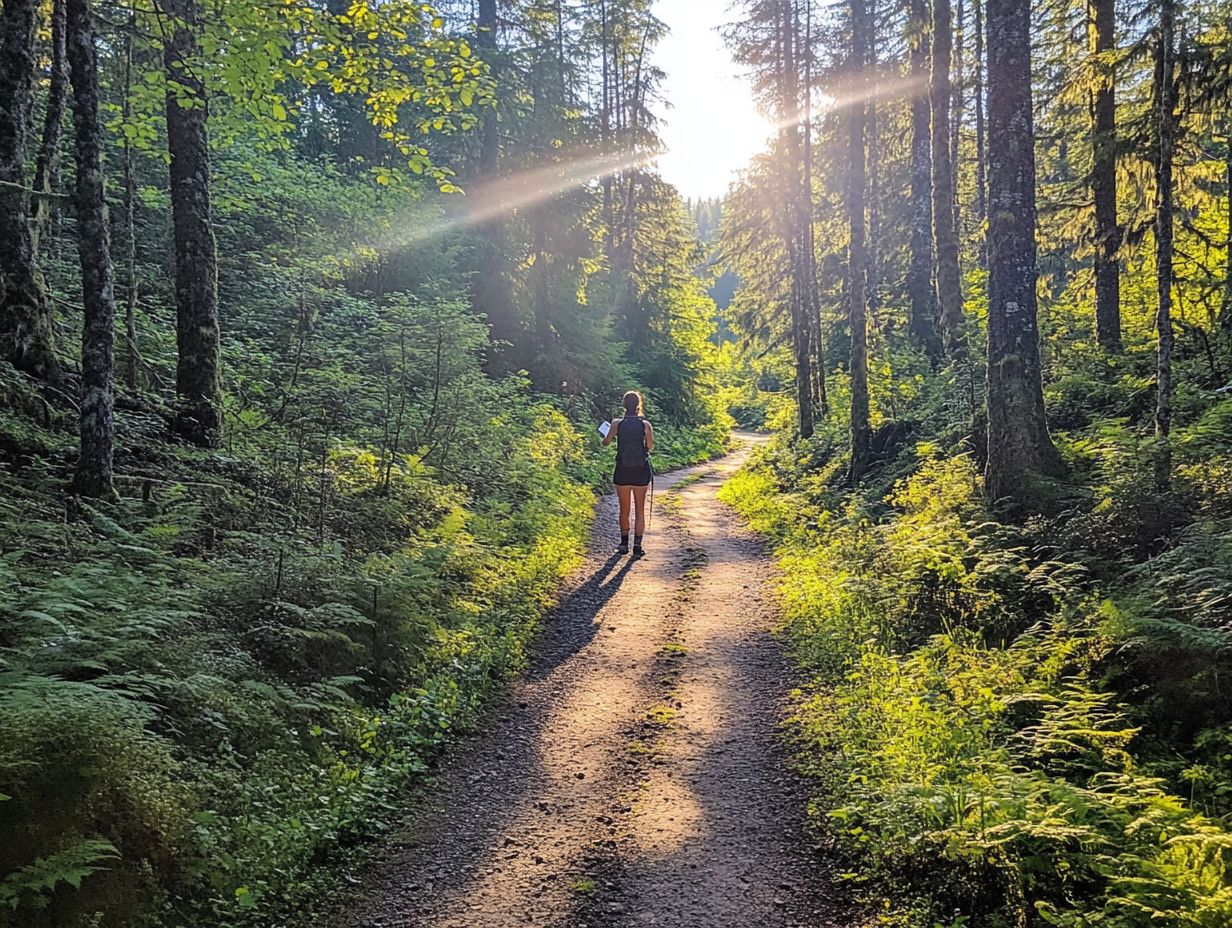
Some key signs include well-maintained paths, clear trail markers, and a variety of terrain and scenery.
Are there any specific details to keep an eye out for when evaluating a hiking trail?
Yes, check the trail slope and look for natural obstacles like rocks or roots. Also, consider the overall condition of the trail.
What are some red flags indicating a trail may not be suitable for all skill levels?
Signs include steep inclines, narrow paths, and a lack of rest areas or benches along the way.
How important is the surrounding environment when determining trail quality?
The surrounding environment greatly impacts trail quality. Look for trails offering diverse and scenic views, as well as various plant and animal life.
What resources can assist in finding good hiking trails?
Resources like hiking guidebooks, online forums, and apps providing trail maps and reviews from fellow hikers are very helpful.
What are some tips for beginners on how to spot a good hiking trail?
For beginners, it’s important to start with shorter, well-marked trails. Gradually work your way up to more challenging ones.
Ask experienced hikers or park rangers for their recommendations. They can offer valuable insights to help you find the best trails!


